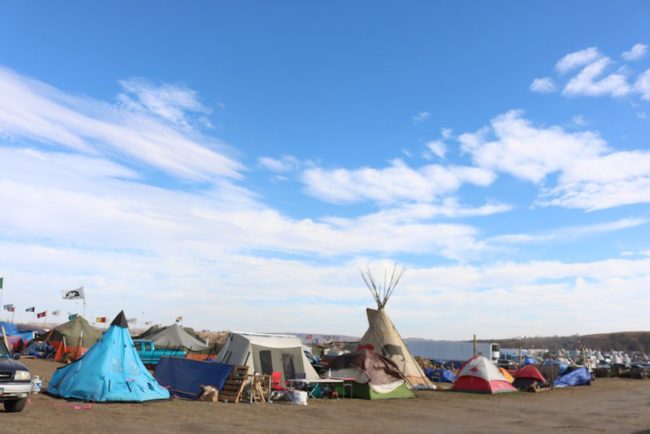By Aman Dhaliwal
STANDING ROCK SIOUX RESERVATION, N.D. — The Dakota Access pipeline, set to sprawl 1,172 miles over four states, finds itself embroiled in a counter-movement now spanning seven months.
Members of the Standing Rock Sioux Tribe and other supporters first gathered in April after repeated requests to reroute the pipeline away from the unceded territories under the Treaty of Fort Laramie fell ignored. The protesters raised urgent concerns about possible water contamination as well as the desecration of sacred burial grounds.
Today, protesters continue to gather at the nearby Oceti Sakowin encampment, a focal point for prayer and action that is now home to hundreds of cars, teepees, and tents. Tribe members and other pipeline opponents explained during interviews that the massive project threatens the Sioux’s natural surroundings and way of life.
“We just want some water to drink,” said Caitlin Little Eagle, 18, a member of the Standing Rock Sioux. “It shouldn’t be that big of a deal … but it is.”

Energy Transfer Partners, the Dallas-based parent company to Dakota Access, LLC, expects the underground crude oil pipeline to transport 470,000 barrels per day. The company’s official statement says, “…DAPL will provide a critical link to help close the gap between what we produce as a country and what we consume.” Addressing safety, the company adds, “Underground pipelines are the safest mode of transporting crude oil.”
However, according to a comprehensive report by the Pipeline and Hazardous Materials Safety Administration under the U.S. Department of Transportation, statistics paint a different light. Significant pipeline incidents total 5,674 since 1996, an average of 284 incidents per year, including “highly volatile liquid releases” or “liquid releases resulting in an unintentional fire or explosion.” Total damage has amounted to roughly $7.5 billion, according to the report.
In the months since April, the #NoDAPL movement has gained traction. As of November 12, Standing Rock Reservation holds 1.67 million Facebook check-ins.
Nonetheless, the use of force by police, ambivalent statements by President Obama, and the Energy Transfer Partners’ CEO Kelcy Warren’s recent claims comparing the movement’s boycotts of banks to terrorism and confident boastings about his pipeline’s completion, serve as clear reminders that this movement is up against numerous obstacles.
#NoDAPL protesters also must contend with a two month deadline in light of the recent election. Donald Trump’s motivations for pipeline completion come to light after his financial disclosure statements show his current investments. Trump invested $500,000-$1 million in Energy Transfer Partners, as well as invested $500,000-$1 million in Phillips 66, a company that owns a 25% stake in the Dakota access pipeline. Also, Warren, a Dallas-based billionaire who funded Klyde Warren Park, supported president-elect Donald J. Trump with more than $100,000 in campaign donations..
However, #NoDAPL protesters vow to continue working toward upholding human rights, protecting the environment, dismantling systems of colonization, resisting corporate tyranny, withstanding militarized police force, and maintaining peace.
“If you’re not here, and you haven’t seen it…we’re working together with a warmth and a softness…so that’s the oneness and the love that you feel when you’re on camp,” Christine Verdico, 52, said.

The Storify article below is a personal account regarding a weekend spent at the Standing Rock Sioux Tribe Reservation.










